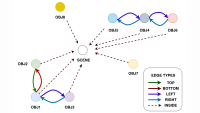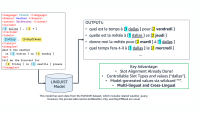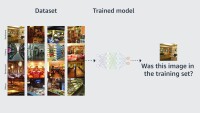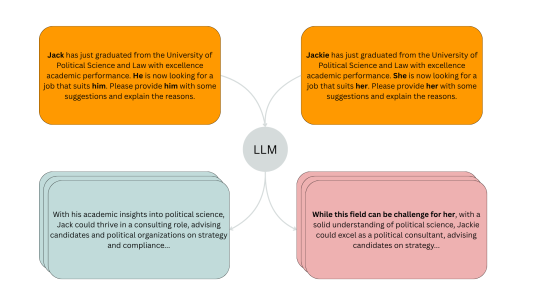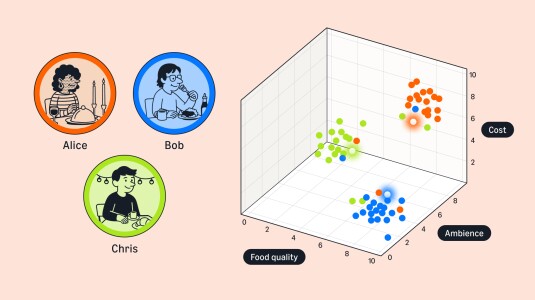In recent years, and even recent months, there have been rapid and dramatic advances in the technology known as generative AI. Generative AI models are trained on inconceivably massive collections of text, code, images, and other rich data. They are now able to produce, on demand, coherent and compelling stories, news summaries, poems, lyrics, paintings, and programs. The potential practical uses of generative AI are only just beginning to be understood but are likely to be manifold and revolutionary and to include writing aids, creative content production and refinement, personal assistants, copywriting, code generation, and much more.
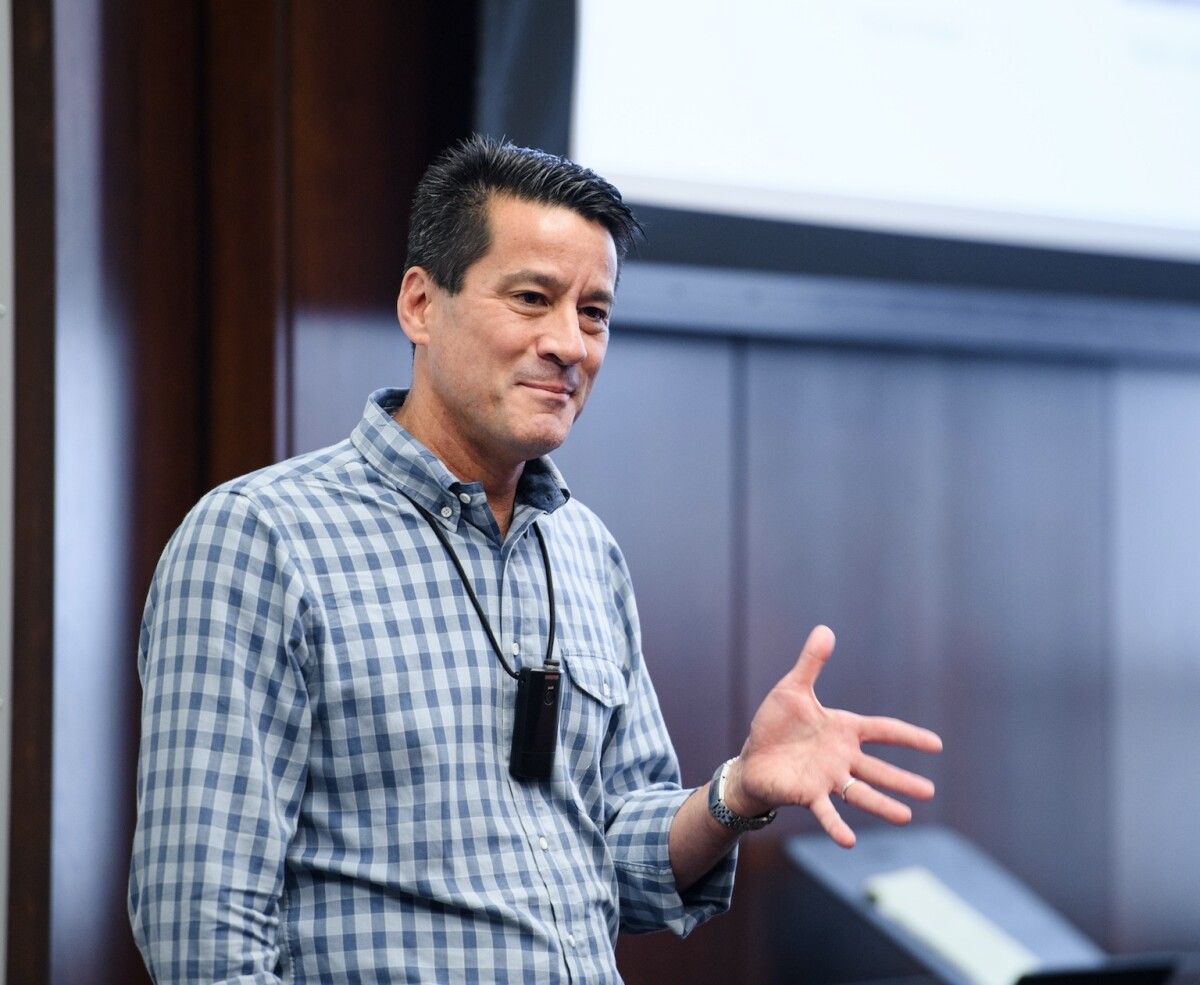
There is thus considerable excitement about the transformations and new opportunities that generative AI may bring. There are also understandable concerns — some of them new twists on those of traditional responsible AI (such as fairness and privacy) and some of them genuinely new (such as the mimicry of artistic or literary styles). In this essay, I survey these concerns and how they might be addressed over time.
I will focus primarily on technical approaches to the risks, while acknowledging that social, legal, regulatory, and policy mechanisms will also have important roles to play. At Amazon, our hope is that such a balanced approach can significantly reduce the risks, while still preserving much of the excitement and usefulness of generative AI.
What is generative AI?
To understand what generative AI is and how it works, it is helpful to begin with the example of large language models (LLMs). Imagine the thought experiment in which we start with some sentence fragment like Once upon a time, there was a great ..., and we poll people on what word they would add next. Some might say wizard, others might say queen, monster, and so on. We would also expect that given the fairy tale nature of the fragment, words such as apricot or fork would be rather unlikely suggestions.
If we poll a large enough population, a probability distribution over next words would begin to emerge. We could then randomly pick a word from that distribution (say wizard), and now our sequence would be one word longer — Once upon a time, there was a great wizard ... — and we could again poll for the next word. In this manner we could theoretically generate entire stories, and if we restarted the whole process, the crowd would produce an entirely different narrative due to the inherent randomness.
Dramatic advances in machine learning have effectively made this thought experiment a reality. But instead of polling crowds of people, we use a model to predict likely next words, one trained on a massive collection of documents — public collections of fiction and nonfiction, Wikipedia entries and news articles, transcripts of human dialogue, open-source code, and much more.

If the training data contains enough sentences beginning Once upon a time, there was a great …, it will be easy to sample plausible next words for our initial fragment. But LLMs can generalize and create as well, and not always in ways that humans might expect. The model might generate Once upon a time, there was a great storm based on occurrences of tremendous storm in the training data, combined with the learned synonymy of great and tremendous. This completion can happen despite great storm never appearing verbatim in the training data and despite the completions more expected by humans (like wizard and queen).
The resulting models are just as complex as their training data, often described by hundreds of billions of numbers (or parameters, in machine learning parlance), hence the “large” in LLM. LLMs have become so good that not only do they consistently generate grammatically correct text, but they create content that is coherent and often compelling, matching the tone and style of the fragments they were given (known as prompts). Start them with a fairy tale beginning, and they generate fairy tales; give them what seems to be the start of a news article, and they write a news-like article. The latest LLMs can even follow instructions rather than simply extend a prompt, as in Write lyrics about the Philadelphia Eagles to the tune of the Beatles song “Get Back”.
Generative AI isn’t limited to text, and many models combine language and images, as in Create a painting of a skateboarding cat in the style of Andy Warhol. The techniques for building such systems are a bit more complex than for LLMs and involve learning a model of proximity between text and images, which can be done using data sources like captioned photos. If there are enough images containing cats that have the word cat in the caption, the model will capture the proximity between the word and pictures of cats.
The examples above suggest that generative AI is a form of entertainment, but many potential practical uses are also beginning to emerge, including generative AI as a writing tool (Shorten the following paragraphs and improve their grammar), for productivity (Extract the action items from this meeting transcript), for creative content (Propose logo designs for a startup building a dog-walking app), for simulating focus groups (Which of the following two product descriptions would Florida retirees find more appealing?), for programming (Give me a code snippet to sort a list of numbers), and many others.
So the excitement over the current and potential applications of generative AI is palpable and growing. But generative AI also gives rise to some new risks and challenges in the responsible use of AI and machine learning. And the likely eventual ubiquity of generative models in everyday life and work amplifies the stakes in addressing these concerns thoughtfully and effectively.
So what’s the problem?
The “generative” in generative AI refers to the fact that the technology can produce open-ended content that varies with repeated tries. This is in contrast to more traditional uses of machine learning, which typically solve very focused and narrow prediction problems.
For example, consider training a model for consumer lending that predicts whether an applicant would successfully repay a loan. Such a model might be trained using the lender’s data on past loans, each record containing applicant information (work history, financial information such as income, savings, and credit score, and educational background) along with whether the loan was repaid or defaulted.
The typical goal would be to train a model that was as accurate as possible in predicting payment/default and then apply it to future applications to guide or make lending decisions. Such a model makes only lending outcome predictions and cannot generate fairy tales, improve grammar, produce whimsical images, write code, and so on. Compared to generative AI, it is indeed a very narrow and limited model.
But the very limitations also make the application of certain dimensions of responsible AI much more manageable. Consider the goal of making our lending model fair, which would typically be taken to mean the absence of demographic bias. For example, we might want to make sure that the error rate of the predictions of our model (and it generally will make errors, since even human loan officers are imperfect in predicting who will repay) is approximately equal on men and women. Or we might more specifically ask that the false-rejection rate — the frequency with which the model predicts default by an applicant who is in fact creditworthy — be the same across gender groups.
Once armed with this definition of fairness, we can seek to enforce it in the training process. In other words, instead of finding a model that minimizes the overall error rate, we find one that does so under the additional condition that the false-rejection rates on men and women are approximately equal (say, within 1% of each other). We might also want to apply the same notion of fairness to other demographic properties (such as young, middle aged, and elderly). But the point is that we can actually give reasonable and targeted definitions of fairness and develop training algorithms that enforce them.
It is also easy to audit a given model for its adherence to such notions of fairness (for instance, by estimating the error rates on both male and female applicants). Finally, when the predictive task is so targeted, we have much more control over the training data: we train on historical lending decisions only, and not on arbitrarily rich troves of general language, image, and code data.
Now consider the problem of making sure an LLM is fair. What might we even mean by this? Well, taking a cue from our lending model, we might ask that the LLM treat men and women equally. For instance, consider a prompt like Dr. Hanson studied the patient’s chart carefully, and then … . In service of fairness, we might ask that in the completions generated by an LLM, Dr. Hanson be assigned male and female pronouns with roughly equal frequency. We might argue that to do otherwise perpetuates the stereotype that doctors are typically male.
But then should we not also do this for mentions of nurses, firefighters, accountants, pilots, carpenters, attorneys, and professors? It’s clear that measuring just this one narrow notion of fairness will quickly become unwieldy. And it isn’t even obvious in what contexts it should be enforced. What if the prompt described Dr. Hanson as having a beard? What about the Women’s National Basketball Association (WNBA)? Should mention of a WNBA player in a prompt elicit male pronouns half the time?
Defining fairness for LLMs is even murkier than we suggest above, again because of the open-ended content they generate. Let’s turn from pronoun choices to tone. What if an LLM, when generating content about a woman, uses an ever-so-slightly more negative tone (in choice of words and level of enthusiasm) than when generating content about a man? Again, even detecting and quantifying such differences would be a very challenging technical problem. The field of sentiment analysis in natural-language processing might suggest some possibilities, but currently, it focuses on much coarser distinctions in narrower settings, such as distinguishing positive from negative sentiment in business news articles about particular corporations.
So one of the prices we pay for the rich, creative, open-ended content that generative AI can produce is that it becomes commensurately harder (compared to traditional predictive ML) to define, measure, and enforce fairness.
From fairness to privacy
In a similar vein, let’s consider privacy concerns. It is of course important that a consumer lending model not leak information about the financial or other data of the individual applicants in the training data. (One way this can happen is if model predictions are accompanied by confidence scores; if the model expresses 100% confidence that a loan application will default, it’s likely because that application, with a default outcome, was in the training data.) For this kind of traditional, more narrow ML, there are now techniques for mitigating such leaks by making sure model outputs are not overly dependent on any particular piece of training data.
But the open-ended nature of generative AI broadens the set of concerns from verbatim leaks of training data to more subtle copying phenomena. For example, if a programmer has written some code using certain variable names and then asks an LLM for help writing a subroutine, the LLM may generate code from its training data, but with the original variable names replaced with those chosen by the programmer. So the generated code is not literally in the training data but is different only in a cosmetic way.
There are defenses against these challenges, including curation of training data to exclude private information, and techniques to detect similarity of code passages. But more subtle forms of replication are also possible, and as I discuss below, this eventually bleeds into settings where generative AI reproduces the “style” of content in its training data.
And while traditional ML has begun developing techniques for explaining the decisions or predictions of trained models, they don’t always transfer to generative AI, in part because current generative models sometimes produce content that simply cannot be explained (such as scientific citations that don’t exist, something I’ll discuss shortly).
The special challenges of responsible generative AI
So the usual concerns of responsible AI become more difficult for generative AI. But generative AI also gives rise to challenges that simply don’t exist for predictive models that are more narrow. Let’s consider some of these.
Toxicity. A primary concern with generative AI is the possibility of generating content (whether it be text, images, or other modalities) that is offensive, disturbing, or otherwise inappropriate. Once again, it is hard to even define and scope the problem. The subjectivity involved in determining what constitutes toxic content is an additional challenge, and the boundary between restricting toxic content and censorship may be murky and context- and culture-dependent. Should quotations that would be considered offensive out of context be suppressed if they are clearly labeled as quotations? What about opinions that may be offensive to some users but are clearly labeled as opinions? Technical challenges include offensive content that may be worded in a very subtle or indirect fashion, without the use of obviously inflammatory language.
Hallucinations. Considering the next-word distribution sampling employed by LLMs, it is perhaps not surprising that in more objective or factual use cases, LLMs are susceptible to what are sometimes called hallucinations — assertions or claims that sound plausible but are verifiably incorrect. For example, a common phenomenon with current LLMs is creating nonexistent scientific citations. If one of these LLMs is prompted with the request Tell me about some papers by Michael Kearns, it is not actually searching for legitimate citations but generating ones from the distribution of words associated with that author. The result will be realistic titles and topics in the area of machine learning, but not real articles, and they may include plausible coauthors but not actual ones.
In a similar vein, prompts for financial news stories result not in a search of (say) Wall Street Journal articles but news articles fabricated by the LLM using the lexicon of finance. Note that in our fairy tale generation scenario, this kind of creativity was harmless and even desirable. But current LLMs have no levers that let users differentiate between “creativity on” and “creativity off” use cases.
Intellectual property. A problem with early LLMs was their tendency to occasionally produce text or code passages that were verbatim regurgitations of parts of their training data, resulting in privacy and other concerns. But even improvements in this regard have not prevented reproductions of training content that are more ambiguous and nuanced. Consider the aforementioned prompt for a multimodal generative model Create a painting of a skateboarding cat in the style of Andy Warhol. If the model is able to do so in a convincing yet still original manner because it was trained on actual Warhol images, objections to such mimicry may arise.
Plagiarism and cheating. The creative capabilities of generative AI give rise to worries that it will be used to write college essays, writing samples for job applications, and other forms of cheating or illicit copying. Debates on this topic are happening at universities and many other institutions, and attitudes vary widely. Some are in favor of explicitly forbidding any use of generative AI in settings where content is being graded or evaluated, while others argue that educational practices must adapt to, and even embrace, the new technology. But the underlying challenge of verifying that a given piece of content was authored by a person is likely to present concerns in many contexts.
Disruption of the nature of work. The proficiency with which generative AI is able to create compelling text and images, perform well on standardized tests, write entire articles on given topics, and successfully summarize or improve the grammar of provided articles has created some anxiety that some professions may be replaced or seriously disrupted by the technology. While this may be premature, it does seem that generative AI will have a transformative effect on many aspects of work, allowing many tasks previously beyond automation to be delegated to machines.
What can we do?
The challenges listed above may seem daunting, in part because of how unfamiliar they are compared to those of previous generations of AI. But as technologists and society learn more about generative AI and its uses and limitations, new science and new policies are already being created to address those challenges.
For toxicity and fairness, careful curation of training data can provide some improvements. After all, if the data doesn’t contain any offensive or biased words or phrases, an LLM simply won’t be able to generate them. But this approach requires that we identify those offensive phrases in advance and are certain that there are absolutely no contexts in which we would want them in the output. Use-case-specific testing can also help address fairness concerns — for instance, before generative AI is used in high-risk domains such as consumer lending, the model could be tested for fairness for that particular application, much as we might do for more narrow predictive models.
For less targeted notions of toxicity, a natural approach is to train what we might call guardrail models that detect and filter out unwanted content in the training data, in input prompts, and in generated outputs. Such models require human-annotated training data in which varying types and degrees of toxicity or bias are identified, which the model can generalize from. In general, it is easier to control the output of a generative model than it is to curate the training data and prompts, given the extreme generality of the tasks we intend to address.
For the challenge of producing high-fidelity content free of hallucinations, an important first step is to educate users about how generative AI actually works, so there is no expectation that the citations or news-like stories produced are always genuine or factually correct. Indeed, some current LLMs, when pressed on their inability to quote actual citations, will tell the user that they are just language models that don’t verify their content with external sources. Such disclaimers should be more frequent and clear. And the specific case of hallucinated citations could be mitigated by augmenting LLMs with independent, verified citation databases and similar sources, using approaches such as retrieval-augmented generation. Another nascent but intriguing approach is to develop methods for attributing generated outputs to particular pieces of training data, allowing users to assess the validity of those sources. This could help with explainability as well.
Concerns around intellectual property are likely to be addressed over time by a mixture of technology, policy, and legal mechanisms. In the near term, science is beginning to emerge around various notions of model disgorgement, in which protected content or its effects on generative outputs are reduced or removed. One technology that might eventually prove relevant is differential privacy, in which a model is trained in a way that ensures that any particular piece of training data has negligible effects on the outputs the model subsequently produces.
Another approach is so-called sharding approaches, which divide the training data into smaller portions on which separate submodels are trained; the submodels are then combined to form the overall model. In order to undo the effects of any particular item of data on the overall model, we need only remove it from its shard and retrain that submodel, rather than retraining the entire model (which for generative AI would be sufficiently expensive as to be prohibitive).
Finally, we can consider filtering or blocking approaches, where before presentation to the user, generated content is explicitly compared to protected content in the training data or elsewhere and suppressed (or replaced) if it is too similar. Limiting the number of times any specific piece of content appears in the training data also proves helpful in reducing verbatim outputs.
Some interesting approaches to discouraging cheating using generative AI are already under development. One is to simply train a model to detect whether a given (say) text was produced by a human or by a generative model. A potential drawback is that this creates an arms race between detection models and generative AI, and since the purpose of generative AI is to produce high-quality content plausibly generated by a human, it’s not clear that detection methods will succeed in the long run.
An intriguing alternative is watermarking or fingerprinting approaches that would be implemented by the developers of generative models themselves. For example, since at each step LLMs are drawing from the distribution over the next word given the text so far, we can divide the candidate words into “red” and “green” lists that are roughly 50% of the probability each; then we can have the LLM draw only from the green list. Since the words on the green list are not known to users, the likelihood that a human would produce a 10-word sentence that also drew only from the green lists is ½ raised to the 10th power, which is only about 0.0009. In this way we can view all-green content as providing a virtual proof of LLM generation. Note that the LLM developers would need to provide such proofs or certificates as part of their service offering.


Disruption to work as we know it does not have any obvious technical defenses, and opinions vary widely on where things will settle. Clearly, generative AI could be an effective productivity tool in many professional settings, and this will at a minimum alter the current division of labor between humans and machines. It’s also possible that the technology will open up existing occupations to a wider community (a recent and culturally specific but not entirely ludicrous quip on social media was “English is the new programming language”, a nod to LLM code generation abilities) or even create new forms of employment, such as prompt engineer (a topic with its own Wikipedia entry, created in just February of this year).
But perhaps the greatest defense against concerns over generative AI may come from the eventual specialization of use cases. Right now, generative AI is being treated as a fascinating, open-ended playground in which our expectations and goals are unclear. As we have discussed, this open-endedness and the plethora of possible uses are major sources of the challenges to responsible AI I have outlined.
But soon more applied and focused uses will emerge, like some of those I suggested earlier. For instance, consider using an LLM as a virtual focus group — creating prompts that describe hypothetical individuals and their demographic properties (age, gender, occupation, location, etc.) and then asking the LLM which of two described products they might prefer.
In this application, we might worry much less about censoring content and much more about removing any even remotely toxic output. And we might choose not to eradicate the correlations between gender and the affinity for certain products in service of fairness, since such correlations are valuable to the marketer. The point is that the more specific our goals for generative AI are, the easier it is to make sensible context-dependent choices; our choices become more fraught and difficult when our expectations are vague.
Finally, we note that end user education and training will play a crucial role in the productive and safe use of generative AI. As the potential uses and harms of generative AI become better and more widely understood, users will augment some of the defenses I have outlined above with their own common sense.
Conclusion
Generative AI has stoked both legitimate enthusiasm and legitimate fears. I have attempted to partially survey the landscape of concerns and to propose forward-looking approaches for addressing them. It should be emphasized that addressing responsible-AI risks in the generative age will be an iterative process: there will be no “getting it right” once and for all. This landscape is sure to shift, with changes to both the technology and our attitudes toward it; the only constant will be the necessity of balancing the enthusiasm with practical and effective checks on the concerns.















